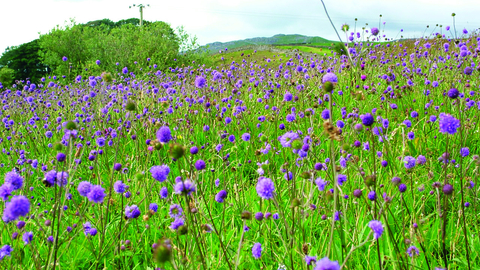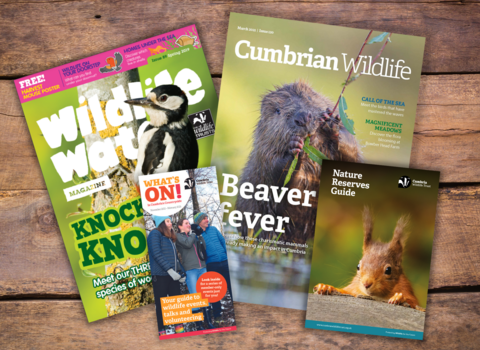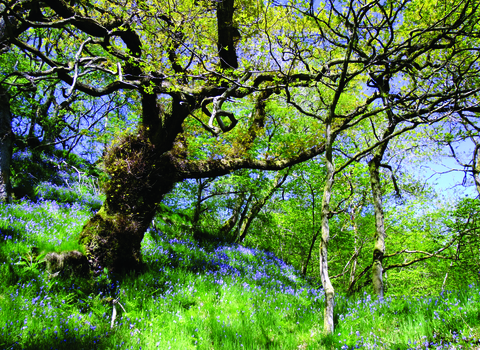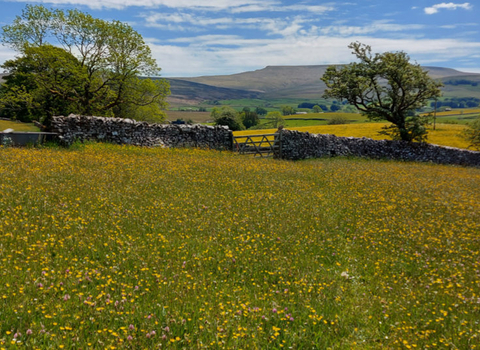
Augill pasture nature reserve
Augill Pasture
Location
OS Map Reference
1:50,000. Sheet no. 91Grid reference: NY 815 146
Getting here
By car:
From Brough take A66 east for approximately 1 mile. Take the first left and turn right almost immediately. Follow this road until it ends. Park in the car park. The reserve is reached by going through a gate in the wall leading to the old smelt mill.
By bicycle:
The reserve is 2.6km/1.6miles from National Route 70 Walney to Wear (W2W).
By public transport:
Buses run from Ravenstonedale and Kirkby Stephen to North Stainmore.
View on What3Words
Know before you go
Dogs
When to visit
Opening times
Open all year roundBest time to visit
May to SeptemberAbout the reserve
Wildlife highlights
- A dazzling array of flowers including globeflower, melancholy thistle, lady’s-mantle, common knapweed, wood crane’s-bill, great burnet and devil’s-bit scabious can be seen between May and September.
- Broad-leaved helleborine can be seen in the birch, ash and willow woodland – it’s found here at its highest location in Cumbria
- Beautiful orchids such as frog, fragrant, common spotted and twayblade
- In spring - flower display of bluebells, primrose, wild garlic along with herb paris and globe flower
- In summer - the upland hay meadow is at its best and orchids are in flower
- In autumn - the whole pasture is transformed into a blue mist of devil's bit scabious
Throughout the year you can explore the evidence of the industrial past and archaeological remains.
What makes Augill pasture so special?
The pasture is a particular type of species-rich grassland known as upland hay meadow.
With fewer than 1,000 hectares remaining in just a few valleys in the Pennines and Lake District, this landscape is extremely rare.
Wildflowers abound in the pasture
The area of open grassland known as the pasture is a wonderful area of species rich grassland.
From May to September you can find a huge variety of different flowers here including melancholy thistle, lady's mantle, knapweed, wood cranesbill and great burnet.
In summer you will come across orchids such as fly orchid, fragrant orchid, heath spotted and common spotted orchid. If you look carefully you might also spot the unassuming frog orchid.
September is the time when the meadow area takes on a wonderful purple hue when devil's bit scabious is in flower.
Rare mountain hay meadow
This type of grassland, known as mountain hay meadow, is extremely rare in Britain with less than 1,000 hectares remaining in just a few upland valleys in the Pennines and the Lake District.
The pasture was probably used for grazing pit ponies whilst the mines were in operation.
Woodland areas
Since the smelt mill was abandoned at the end of the 19th century, the woodland you now see has been able to regenerate.
The main tree species are birch, ash and willow with a shrub layer of hazel and rowan.
In late summer, look out for the magnificent broad leaved helleborine which grows here at its highest location in Cumbria.
Keeping it special
In 1990 the site was threatened by the widening of the A66 but fortunately the road was re-routed and the nature reserve was designated as a Site of Special Scientific Interest.
Management involves cutting and grazing to maintain the diversity of plant species found here.
Industrial history
Augill Pasture is now a haven for wildlife but during the 19th century it was at the heart of an industrial area.
Within the nature reserve are the remains of a lead smelt mill dating from 1843 (now leased by the North Pennines Heritage Trust) together with associated structures.
People's Meadow
Augill Pasture has been suggested by members of the public as a People's Meadow. These are people's favourite places to see meadow wild flowers. They encompass a range of sites; many with public access, some historic and others modern. Whilst these submissions have not been verified against the criteria of the Coronation Meadows project, they remain valuable places for people to enjoy our wonderful flora.
Recent history
Augill Pasture is owned by Plantlife and has been leased to Cumbria Wildlife Trust since 1998.
Species
Habitat
Contact us
Environmental designation
Upcoming events at Augill Pasture Nature Reserve
If there are any upcoming events at Augill Pasture Nature Reserve we'll show them to you below.
Did you know?
Broad-leaved helleborine is found here at its highest location in Cumbria

Support our conservation work on this nature reserve,
and protect Cumbria's wildlife & wild places.






